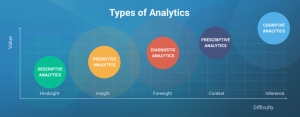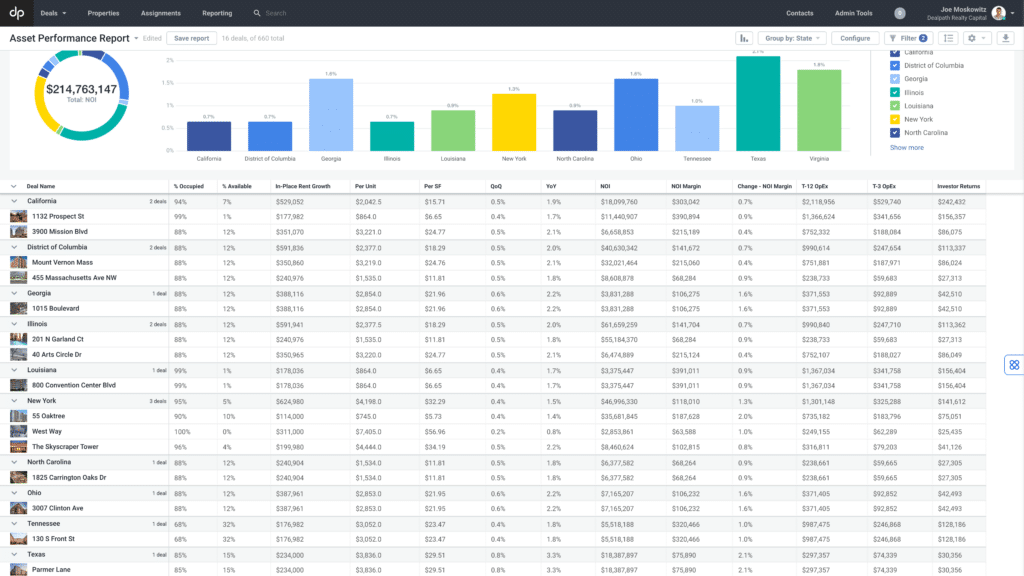Introduction: The Data-Driven Revolution in Real Estate
In an era where information is power, real estate analytics has emerged as the driving force behind maximizing investment returns. This article takes you on a journey through the evolution of data analytics in real estate and how it is now translating data into dollars for savvy investors.
From Data to Dollars: Real Estate Analytics’ Predictive Power
In an era where information is akin to currency, the realm of real estate investment has undergone a transformation fueled by the power of data analytics. This article embarks on a journey through the evolution of data analytics in real estate, illustrating how it has evolved from providing retrospective insights to predicting and maximizing investment returns. It’s a journey from data to dollars, where investors harness the predictive power of data analytics to enhance their investment decisions.
The Past: Descriptive Analytics
Historically, real estate investors relied on descriptive analytics to gain insights into past market trends and property performance. Descriptive analytics, often considered the first step in data analysis, allowed investors to examine historical sales data and derive valuable information from it. By analyzing sales history and market retrospectives, investors could understand how properties had performed in the past and assess broader market trends.
This retrospective approach was invaluable for gaining a sense of the market’s historical dynamics, identifying areas of growth, and making informed decisions based on past performance. However, its primary limitation was its focus on historical data, offering insights predominantly into what had already occurred. It was a tool for understanding the past but did not provide a lens into the future.
The Present: Diagnostic and Predictive Analytics
As technology advanced and the volume of real estate data grew, the realm of data analytics expanded to include diagnostic and predictive analytics. This evolution marked a shift from merely understanding what had happened in the past to uncovering why and how things were happening in the present and what might happen in the future.
Diagnosing Market Factors
Diagnostic analytics delves into the reasons and mechanisms behind market movements. It allows investors to identify the key factors driving market shifts. By analyzing economic indicators, demographics, infrastructure developments, and other crucial variables, investors gained a deeper understanding of the market’s current state and the driving forces behind it. This insight into market dynamics enabled investors to make more informed decisions based on real-time data.
Predictive Power
Predictithe pinnacle of data-driven insights in the present era, builds on diagnostic analytics by leveraging historical data and advanced algorithms to predict future market trends and property performance. Predictive models analyze past trends and patterns to forecast potential outcomes, empowering investors to make proactive and forward-looking decisions.
For real estate investors, predictive analytics is a game-changer. It offers the ability to foresee market trends, identify investment opportunities, and optimize portfolios for maximum returns. This predictive power enables investors to allocate resources strategically, making decisions with the confidence that comes from data-driven foresight.
The Future: Prescriptive Analytics and AI
The future of real estate data analytics holds even greater promise with the emergence of prescriptive analytics and artificial intelligence (AI). These cutting-edge technologies aim not only to predict future outcomes but also to suggest the best course of action based on those predictions. They are the catalysts that transform data into actionable recommendations and, ultimately, into dollars.

Prescriptive Analytics
Prescriptive analytics takes predictive insights to the next level by providing actionable recommendations. For real estate investors, this means receiving tailored guidance on investment strategies, property selection, risk mitigation, and more. It’s akin to having a data-driven advisor who not only tells you what the future might hold but also prescribes the optimal path to navigate that future for maximum returns.
Investors leveraging prescriptive analytics can fine-tune their investment strategies based on data-driven recommendations, ensuring they make the most profitable decisions while minimizing risks. This technology is revolutionizing the way real estate investments are planned and executed, offering a level of precision and optimization previously unattainable.
AI-Powered Decision-Making
Artificial intelligence is at the forefront of the data analytics revolution. AI-driven algorithms analyze vast datasets, identifying intricate patterns and opportunities that human analysts might overlook. Machine learning algorithms continuously learn from new data, enhancing their predictive capabilities over time. This level of data analysis sophistication has the potential to revolutionize real estate investment decision-making.
AI-powered systems can process and analyze data at speeds and scales that would be impossible for humans to replicate. They can sift through mountains of information to identify emerging market trends, pinpoint high-potential properties, and even assess risks and market dynamics in real-time. AI-driven decision-making is making data-driven investments more accessible and efficient, enabling investors to turn data into dollars at an unprecedented scale.
Investment Success Stories
Real-world success stories showcase how investors have harnessed the power of advanced data analytics to predict market trends and maximize investment returns. These cases underscore the transformative impact of data-driven investment strategies.
Case Study 1: Predicting Emerging Markets
A savvy real estate investor used predictive analytics to identify an emerging market before it gained widespread attention. By analyzing historical data and market indicators, the investor foresaw the area’s growth potential. They acquired properties in the nascent market at favorable prices, and as the market matured, the value of these properties skyrocketed, resulting in substantial profits.
Case Study 2: Optimizing Property Portfolios
Another investor employed prescriptive analytics to optimize their property portfolio. Data-driven recommendations guided them in divesting underperforming assets, reallocating resources to high-potential properties, and implementing strategic improvements. This optimized portfolio not only increased returns but also reduced exposure to market risks.
Expert Insights: Meet Dr. Sophia Carter
To provide a deeper understanding of the evolving landscape of real estate data analytics, we’ve enlisted the expertise of Dr. Sophia Carter, a renowned data scientist specializing in real estate analytics.
Meet Dr. Sophia Carter
Dr. Sophia Carter holds a Ph.D. in Data Science and has a track record of advising top real estate investment firms. Her expertise in predictive analytics and AI-driven decision-making positions her as an authoritative source in the field.
Dr. Carter shares her insights on the current state and future prospects of real estate data analytics, shedding light on how investors can harness data to turn their investments into dollars.
Key Takeaways in a Visual Table:
Now, let’s encapsulate the essential information discussed in this article with a visually engaging table:
| Stage of Data Analytics | Key Points |
|---|---|
| The Past: Descriptive Analytics | – Historical data for understanding past trends. |
| – Focus on sales history and market retrospectives. | |
| The Present: Diagnostic and Predictive Analytics | – Identifying market drivers and trends. |
| – Predicting future market behavior and property performance. | |
| The Future: Prescriptive Analytics and AI | – Providing actionable recommendations. |
| – AI-driven decision-making for maximum returns. |
Conclusion: Maximizing Returns Through Data
In conclusion, the evolution of data analytics from descriptive to predictive and prescriptive insights has transformed the real estate investment landscape. Investors who embrace data-driven decision-making can turn data into dollars by maximizing returns and minimizing risks. As technology continues to advance, the future of real estate investment is characterized by unprecedented profit potential through the power of data analytics. By harnessing the predictive and prescriptive capabilities of data analytics, investors can navigate the complex world of real estate investments with confidence, ensuring that data doesn’t just remain data but translates into tangible returns on their investments.



